- Watering Techniques for Indoor Plants
- 1. Watering frequency
- 2. Avoid overwatering
- 3. Watering methods
- 4. Proper drainage
- 5. Consider self-watering systems
- 6. Monitor humidity levels
- 7. Adjust watering during the different seasons
- Choosing the Right Location for Indoor Plants
- 1. Consider the Light Requirements
- 2. Consider Temperature and Humidity
- 3. Assess Air Circulation
- 4. Consider Accessibility
- Providing Adequate Lighting for Indoor Plants
- Creating a Humid Environment for Indoor Plants
- 1. Group plants together
- 2. Use a pebble tray
- 3. Mist your plants
- 4. Use a humidifier
- 5. Create a humidity tent
- 6. Water your plants thoroughly before leaving
- Fertilizing Indoor Plants Before Leaving
- 1. Choose the right fertilizer
- 2. Follow the instructions
- 3. Apply the fertilizer before leaving
- 4. Use slow-release fertilizers
- 5. Be mindful of plant-specific needs
- 6. Consider using organic fertilizers
- 7. Inform your caretaker
- Protecting Indoor Plants from Pests
- 1. Regularly inspect your plants
- 2. Isolate affected plants
- 3. Use natural pest control methods
- 4. Maintain good hygiene
- 5. Avoid overwatering
- 6. Quarantine new plants
- 7. Monitor humidity levels
- 8. Seek professional help if needed
- Using Self-Watering Systems for Indoor Plants
- How Self-Watering Systems Work
- Benefits of Using Self-Watering Systems
- Choosing the Right Self-Watering System
- Tips for Using Self-Watering Systems
- Seeking Help from a Plant-Sitter
- Benefits of Hiring a Plant-Sitter
- Choosing a Plant-Sitter
- Preparing for the Plant-Sitter
- Q&A:
- How can I take care of my indoor plants while I’m on vacation?
- Should I water my indoor plants before leaving for vacation?
- How often should I water my indoor plants while I’m on vacation?
- Can I use self-watering systems for my indoor plants while I’m on vacation?
- How can I protect my indoor plants from pests while I’m away?
- Is it necessary to prune my indoor plants before going on vacation?
- What should I do if my indoor plants look stressed or wilted when I return from vacation?
- Video: 12 Tips for Keeping Houseplants Healthy When you Travel!
Indoor plants can bring life and beauty to any space, but they require regular care and maintenance to thrive. But what do you do when you’re planning a vacation? Leaving your plants unattended for an extended period can lead to wilting, leaf drop, and even plant death.
Fortunately, with a little planning, you can ensure that your indoor plants stay healthy while you’re away. Here are some tips to help you take care of your plants before you go on vacation:
1. Water plants thoroughly: Before leaving, give your plants a good watering to ensure that the soil is adequately moistened. This will help them withstand the dry conditions while you’re away. Be careful not to overwater, as this can lead to root rot.
Pro tip: For smaller plants, you can place them in a shallow tray filled with water to provide them with a self-watering system.
2. Group plants together: Placing your indoor plants close together can create a mini greenhouse effect. The plants will create humidity, which will help them retain moisture during your absence.
Pro tip: You can also cover the plants with a clear plastic bag to create a mini greenhouse. Just make sure to remove the bag for a few hours each day to prevent the buildup of excess moisture.
3. Use self-watering devices: There are various self-watering devices available in the market that can keep your plants hydrated while you’re away. These devices release water slowly into the soil, ensuring that your plants receive a consistent supply of moisture.
4. Keep plants out of direct sunlight: Position your plants away from windows or use curtains to filter the sunlight. Too much direct sunlight can lead to excessive evaporation and heat stress, especially during the hot summer months.
5. Ask a friend or neighbor for help: If you have a trusted friend or neighbor who can check on your plants, ask them to do so. They can water the plants if needed and ensure that everything is in order while you’re away.
By following these tips, you can enjoy your vacation with peace of mind, knowing that your indoor plants are being well taken care of.
Watering Techniques for Indoor Plants
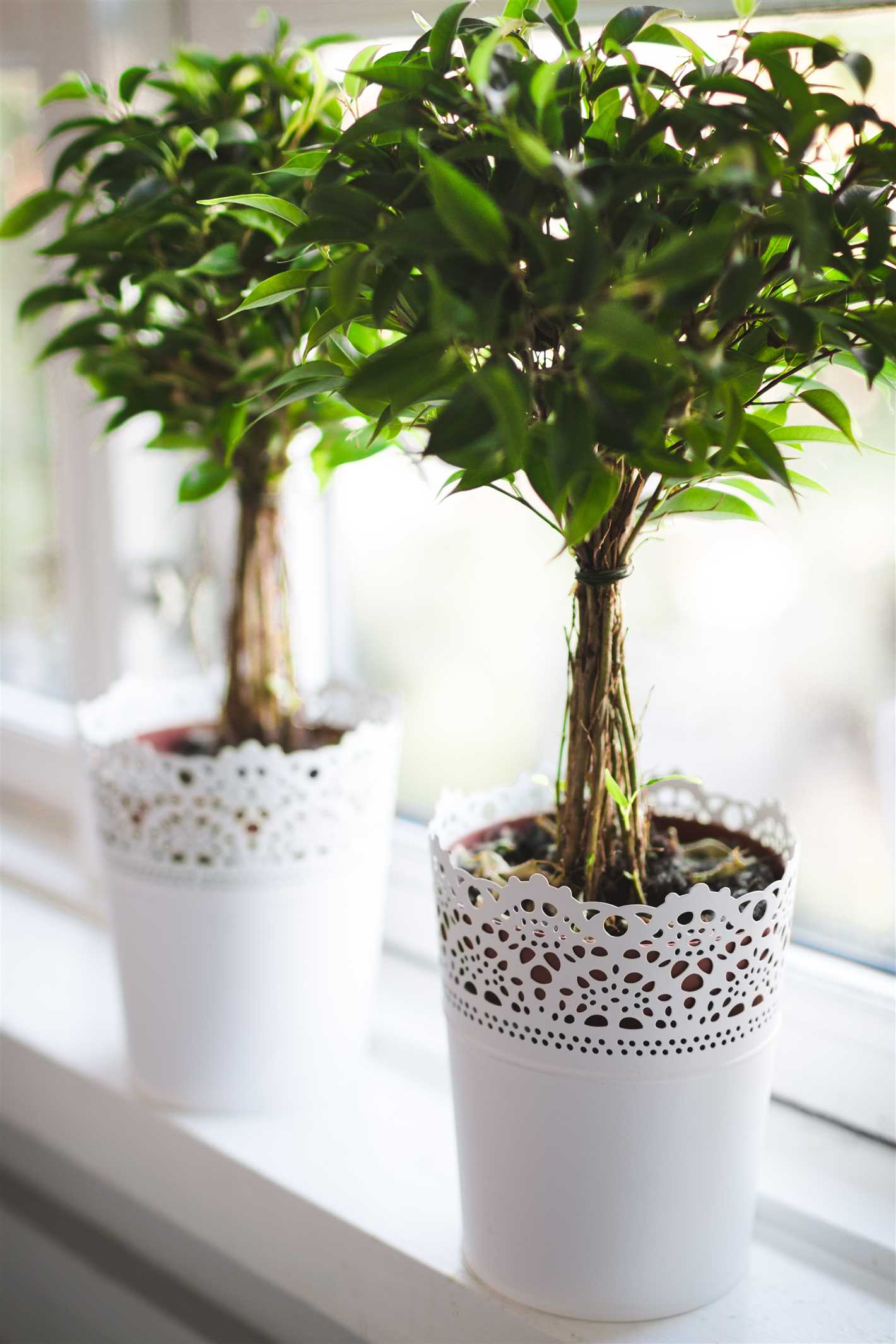
1. Watering frequency
Indoor plants have different watering needs, so it’s important to understand the specific requirements of each plant. Some plants prefer to dry out slightly between waterings, while others need consistently moist soil. Research the watering needs of your specific plants and adjust your watering frequency accordingly.
2. Avoid overwatering
Overwatering is one of the most common reasons why indoor plants die. It’s essential to avoid excessively watering your plants. Check the moisture level of the soil before watering by inserting your finger into the soil up to the second knuckle. If the soil feels damp, wait until it dries out slightly before watering again.
3. Watering methods
There are various methods you can use to water indoor plants:
- Top watering: Pour water directly onto the soil until it comes out of the drainage holes at the bottom of the pot. This ensures that the water reaches the roots.
- Bottom watering: Place the pot in a tray filled with water and allow the plant to absorb water through the drainage holes. This method is useful for plants that are sensitive to excessive moisture on their leaves.
- Misting: Some plants, especially those with tropical origins, benefit from occasional misting. Use a spray bottle to mist the leaves with water, creating a humid environment.
4. Proper drainage
Ensure that your indoor plants have proper drainage to prevent water from sitting in the bottom of the pot. This can lead to root rot and other fungal diseases. Use pots with drainage holes and place a tray or saucer underneath to catch excess water.
5. Consider self-watering systems
If you frequently travel or have a busy schedule, you may want to consider investing in self-watering systems. These systems provide a consistent water supply to your plants, ensuring they don’t dry out while you’re away.
6. Monitor humidity levels
Indoor plants thrive in environments with adequate humidity levels. Consider using a humidity monitor to ensure the humidity around your plants is within the recommended range. If the humidity is too low, use a humidifier or place a tray of water near the plants to increase moisture.
7. Adjust watering during the different seasons
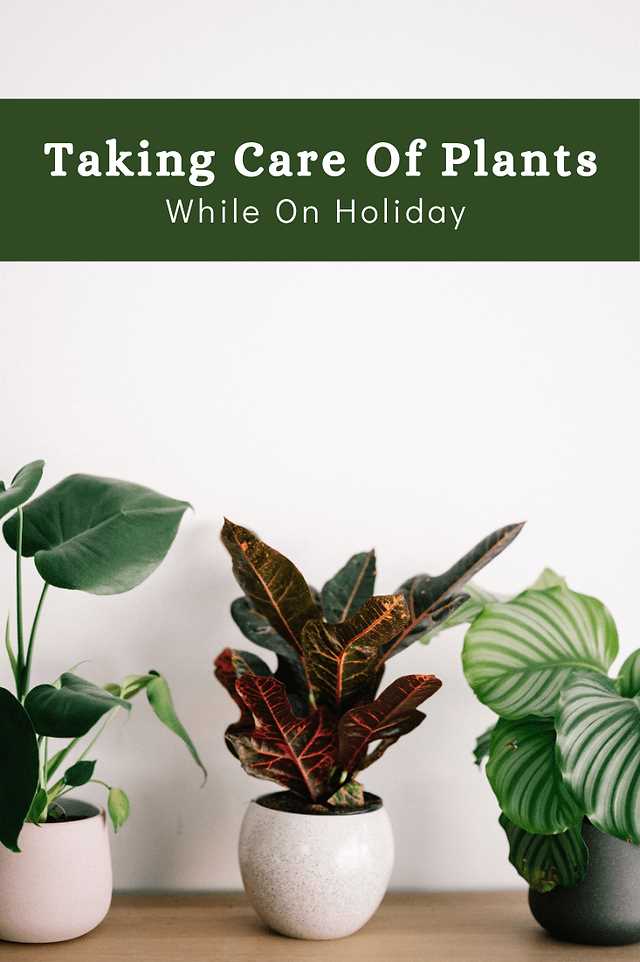
The watering needs of indoor plants can vary depending on the season. During the colder months or dormancy periods, plants require less water. Conversely, in warmer months or when plants are actively growing, they may require more frequent watering. Monitor the soil moisture and adjust your watering schedule accordingly.
By following these watering techniques, you can ensure that your indoor plants stay healthy and thriving while you’re away on vacation or during your daily routine.
Choosing the Right Location for Indoor Plants
When it comes to taking care of indoor plants, one of the most important factors to consider is their placement within your home. The right location can make all the difference in the health and growth of your plants. Here are some tips to help you choose the right spot:
1. Consider the Light Requirements
- Low Light Plants: If you have plants that thrive in low-light conditions, such as snake plants or ZZ plants, they can be placed in areas that receive minimal direct sunlight, like corners or rooms with north-facing windows.
- Medium Light Plants: Most common indoor plants fall under this category and prefer bright, indirect light. Place them near east or west-facing windows, where they can get a few hours of morning or afternoon sun.
- Bright Light Plants: Plants like succulents and cacti require bright, direct sunlight for several hours a day. They should be placed in south-facing windows or near a bright, unobstructed light source.
2. Consider Temperature and Humidity
Indoor plants have varying temperature and humidity preferences, so it’s essential to choose a location that suits their needs:
- Tropical Plants: These plants thrive in warm and humid conditions, so they should be placed in areas with higher humidity, like bathrooms or kitchens.
- Desert Plants: Plants like cacti prefer warm temperatures and low humidity. They can tolerate drier environments and do well in rooms with air conditioning or heating.
3. Assess Air Circulation
Air circulation is crucial for preventing mold, mildew, and stagnant air around your plants. Make sure there is enough airflow in the chosen location:
- Avoid Crowded Spaces: Placing plants too close together or in a cluttered area can limit airflow. Give them enough space to breathe and grow.
- Avoid Drafty Areas: While plants need fresh air, they can be negatively affected by drafts or extreme temperature fluctuations. Avoid placing them near drafty windows, doors, or vents.
4. Consider Accessibility
Lastly, consider the accessibility of your plants. Choose a location that allows you to easily access them for watering, pruning, and other maintenance tasks.
By taking into account these factors when choosing the right location for your indoor plants, you can create an optimal environment for their growth and ensure they receive the care they need, even when you’re on vacation.
Providing Adequate Lighting for Indoor Plants
Proper lighting is essential for the health and growth of indoor plants, especially when you are away on vacation and unable to provide natural sunlight. Here are some tips on how to ensure your indoor plants receive adequate lighting while you are away:
- Place plants near windows: Position your indoor plants near windows that receive the most sunlight throughout the day. This will help ensure they receive as much natural light as possible.
- Use artificial lighting: If your indoor plants are not located near windows or do not receive enough natural light, consider using artificial lighting. LED grow lights or fluorescent lights can be used to provide the necessary light spectrum for plant growth.
- Set up a timer: Invest in a timer for your artificial lights to automatically turn on and off at specific times. This will help mimic the natural light cycle and prevent overexposure or underexposure to light.
- Adjust light intensity: Different plants have different light requirements. Some plants may need more direct light while others prefer indirect light. Make sure to research the light needs of your specific indoor plants and adjust the light intensity accordingly.
- Rotate plants: To ensure all sides of the plant receive equal light, rotate the pots every few days. This will prevent uneven growth and help the plant receive light from different angles.
Remember, providing adequate lighting is crucial for the overall well-being of your indoor plants. By implementing these tips, you can ensure your plants receive the necessary light even while you are away on vacation.
Creating a Humid Environment for Indoor Plants
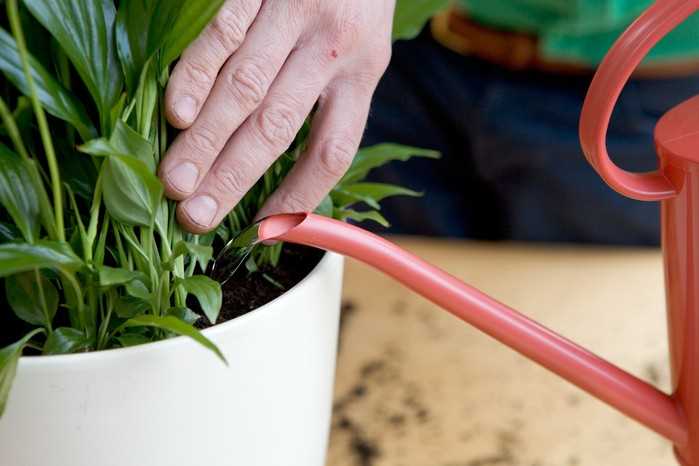
Indoor plants often thrive in environments with higher humidity levels. If you’re planning a vacation but want to ensure your plants remain healthy, creating a humid environment can help keep them happy while you’re away. Here are some tips to create a humid environment for your indoor plants:
1. Group plants together
Consolidating your plants in one area can create a microclimate of higher humidity. As plants transpire, they release moisture into the air, which can increase the humidity around them. Grouping plants together can help create a more humid environment.
2. Use a pebble tray
A pebble tray is a simple yet effective way to increase humidity around your plants. Fill a shallow tray with water and place pebbles or rocks in it. Then, set your plant pots on top of the pebbles. As the water evaporates, it will add moisture to the air around the plants.
3. Mist your plants
Regularly misting your indoor plants can mimic the effect of rain and increase humidity levels. Use a spray bottle filled with water to mist the leaves and stems of your plants, paying attention to the undersides of the leaves as well. Be sure to avoid misting fuzzy-leaved plants, as it can cause fungal problems.
4. Use a humidifier
If you have several indoor plants or live in a dry climate, investing in a humidifier can be a great solution. A humidifier adds moisture to the air, benefiting both your plants and your overall indoor air quality. Set it to the appropriate humidity level for your plants and let it run while you’re away.
5. Create a humidity tent
For smaller plants, you can create a humidity tent by placing them in a clear plastic bag. Secure the bag around the pot with a twist tie or rubber band, creating a makeshift greenhouse. This enclosed environment will help retain moisture and create a humid microclimate for your plants.
6. Water your plants thoroughly before leaving
Before going on vacation, make sure to water your plants thoroughly. This will ensure that they have enough moisture to withstand the period of time you’ll be away. However, be careful not to overwater them, as this can lead to root rot.
Creating a humid environment for your indoor plants can help them thrive while you’re on vacation. By following these tips, you can ensure your plants receive the moisture they need to stay healthy and happy until your return.
Fertilizing Indoor Plants Before Leaving
Before going on vacation, it is important to properly fertilize your indoor plants to ensure they receive the necessary nutrients while you are away. Here are some tips on how to fertilize your plants before leaving:
1. Choose the right fertilizer
Before fertilizing your indoor plants, it is important to choose the right type of fertilizer. There are different types of fertilizers available, including liquid, granular, and slow-release fertilizers. Consider the specific needs of your plants and choose a fertilizer that provides the necessary nutrients.
2. Follow the instructions
When using fertilizers, it is important to carefully follow the instructions provided by the manufacturer. Different fertilizers have different concentrations and application rates, so it is important to use the correct amount to avoid over or under fertilizing your plants. Over-fertilizing can cause nutrient burn, while under-fertilizing may lead to nutrient deficiencies.
3. Apply the fertilizer before leaving
Apply the fertilizer to your indoor plants a few days before leaving for vacation. This will give the plants enough time to absorb the nutrients and ensure they have an adequate supply while you are away. Be sure to water the plants thoroughly after applying the fertilizer to help distribute the nutrients evenly.
4. Use slow-release fertilizers
If you will be away for an extended period, consider using slow-release fertilizers. These fertilizers release nutrients gradually over time, providing a steady supply of nutrients to your plants. This can be especially beneficial for plants that have longer growth cycles or require a consistent nutrient supply.
5. Be mindful of plant-specific needs
Keep in mind that different indoor plants have different nutrient requirements. Some plants may require more frequent fertilization, while others may need less. Research the specific needs of your plants and adjust the fertilizer application accordingly. It is always better to under-fertilize than to over-fertilize, as nutrient excess can be harmful to your plants.
6. Consider using organic fertilizers
If you prefer to use organic products, consider using organic fertilizers for your indoor plants. Organic fertilizers are derived from natural sources and can provide a slow and steady release of nutrients. They are also less likely to cause nutrient imbalances or harm beneficial soil organisms.
7. Inform your caretaker
If you have someone taking care of your plants while you are away, make sure to inform them about the fertilization schedule and any specific instructions. Provide them with the necessary tools and information to properly care for your plants and ensure they continue to receive the nutrients they need.
By following these tips, you can ensure that your indoor plants are well-fertilized before you leave for vacation, helping them stay healthy and vibrant until you return.
Protecting Indoor Plants from Pests
Pests can pose a significant threat to the health and well-being of your indoor plants. To ensure that your plants remain pest-free, it is important to take proactive measures to protect them. Here are some tips to keep pests at bay:
1. Regularly inspect your plants
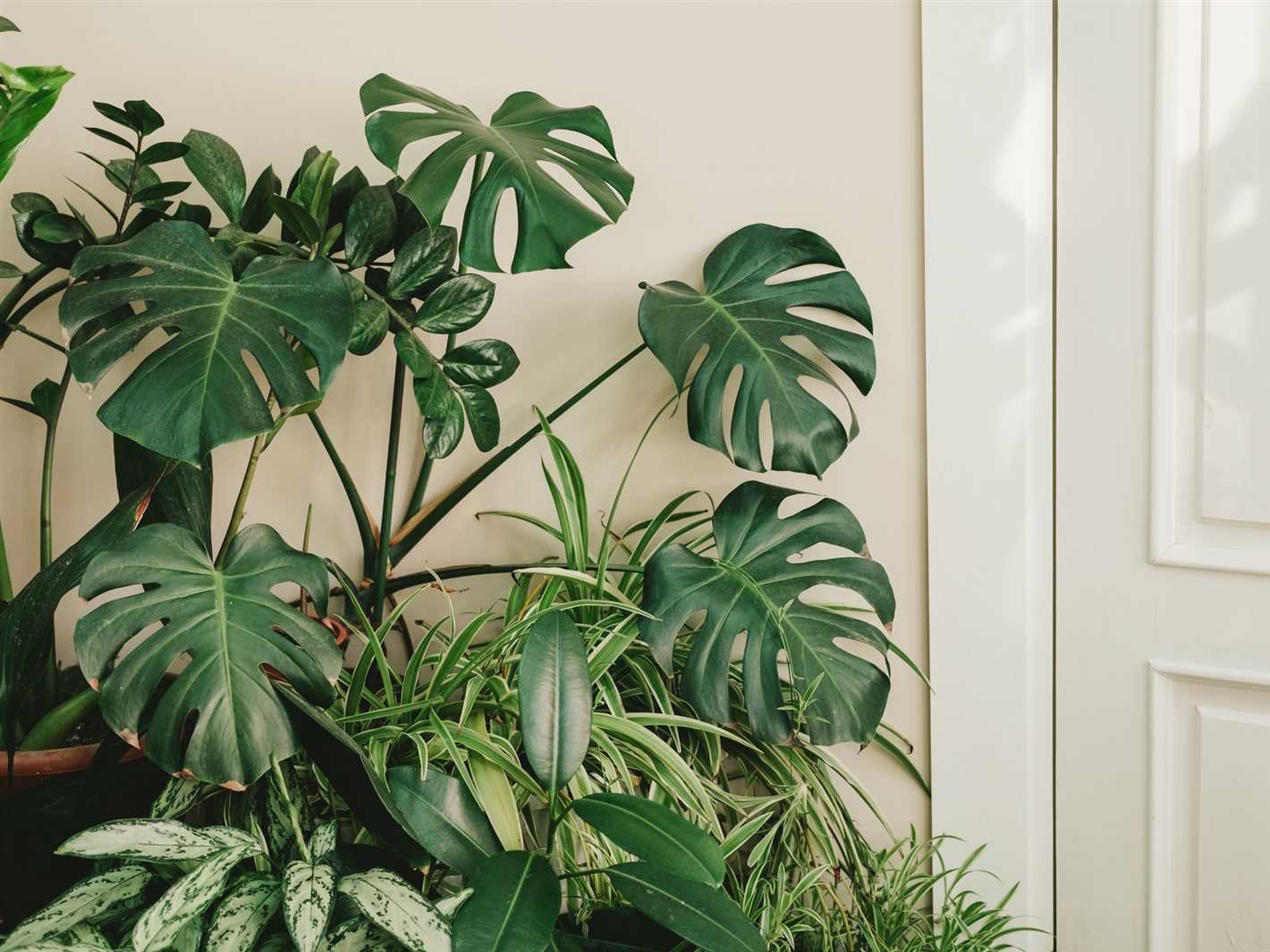
Make it a habit to regularly inspect your plants for any signs of pests. Look for pests such as aphids, mealybugs, spider mites, and scale insects. Pay close attention to the undersides of leaves, where pests often hide.
2. Isolate affected plants
If you notice any signs of pests on your plants, promptly isolate them from your other plants. This will help prevent the pests from spreading and infesting your entire collection.
3. Use natural pest control methods
Consider using natural pest control methods to avoid any harm to your plants and the environment. Some effective methods include spraying plants with a mixture of water and mild soap, using insecticidal soaps or oils, and introducing beneficial insects like ladybugs or predatory mites.
4. Maintain good hygiene
Keep your indoor plant area clean and free of debris. Remove any dead leaves or fallen plant material, as they can attract pests. Regularly wipe down the leaves of your plants with a damp cloth to remove dust and prevent pests from settling.
5. Avoid overwatering
Overwatering can create the perfect breeding ground for pests, such as fungus gnats. Make sure to water your plants only when the top inch of soil feels dry, and ensure that your pots have drainage holes. Avoid allowing water to accumulate in saucers or trays.
6. Quarantine new plants
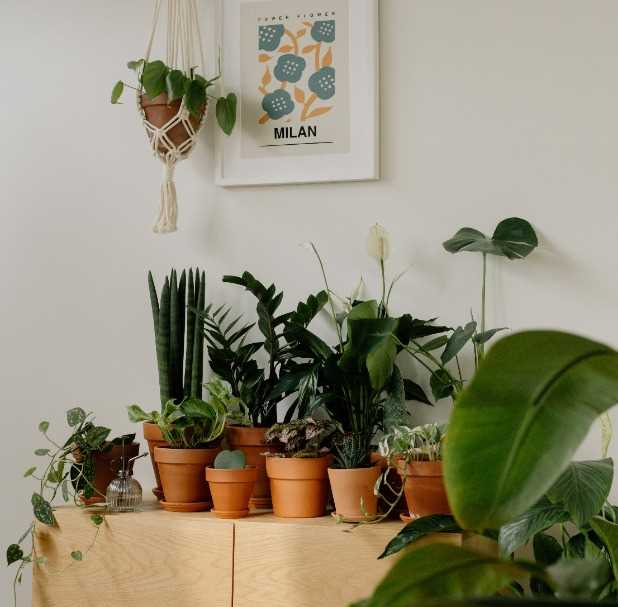
When bringing new plants into your home, quarantine them for a few weeks before placing them near your existing plants. This will allow you to monitor them for any signs of pests and prevent the infestation from spreading to your other plants.
7. Monitor humidity levels
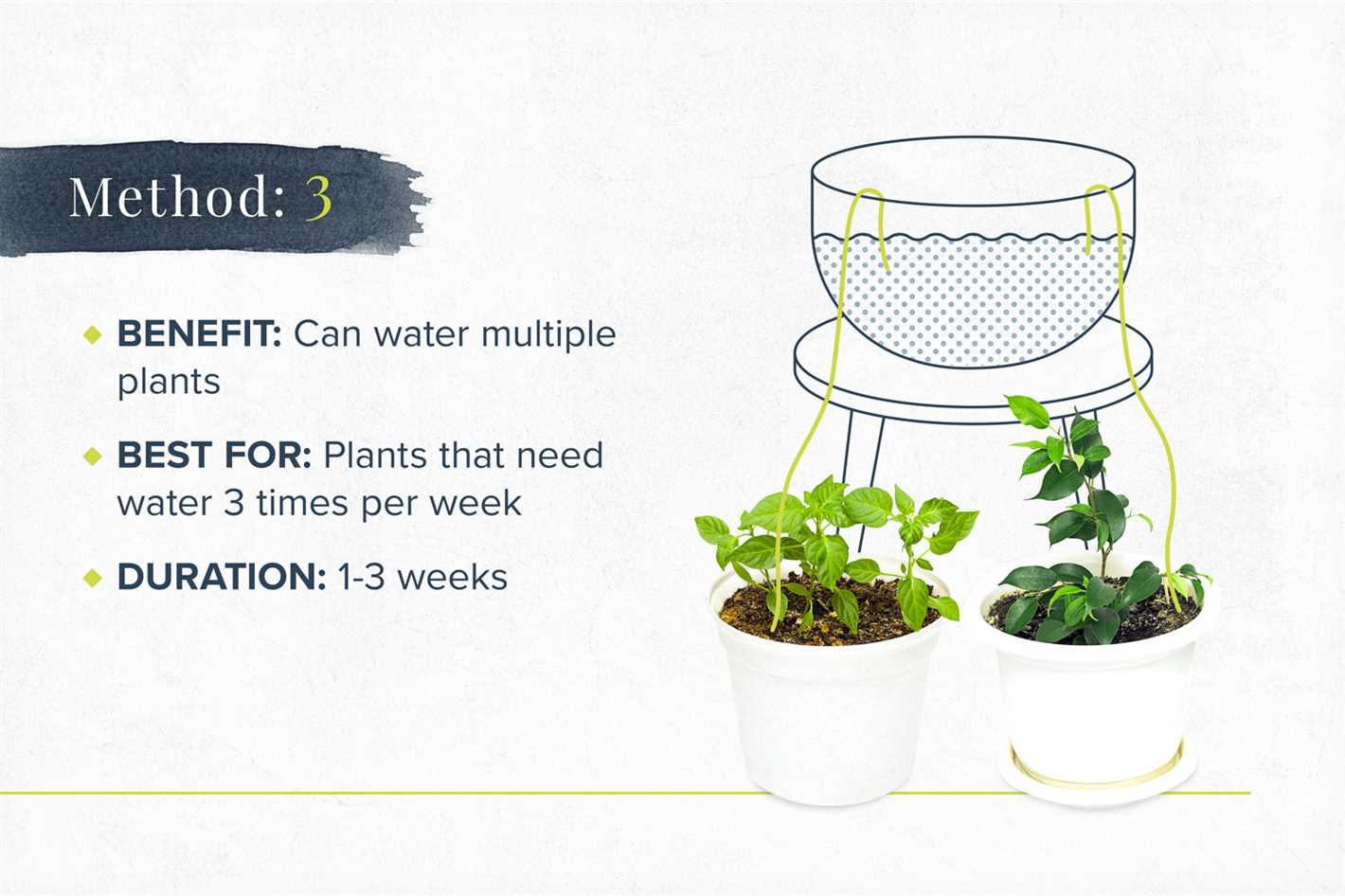
Some pests thrive in high humidity conditions. By keeping an eye on the humidity levels in your indoor plant area, you can help prevent pest infestations. Use a hygrometer to measure humidity and consider using a dehumidifier if necessary.
8. Seek professional help if needed
If you are dealing with a persistent pest problem that you cannot resolve on your own, consider seeking professional help. A professional exterminator or a horticulturist can provide guidance and recommend effective pest control methods specifically tailored to your indoor plants.
By implementing these preventative measures, you can protect your indoor plants from pests and ensure that they stay healthy and thriving while you are away on vacation.
Using Self-Watering Systems for Indoor Plants
One convenient way to ensure that your indoor plants receive the proper amount of water while you’re on vacation is to use a self-watering system. These systems are designed to provide consistent moisture to your plants, allowing them to thrive even when you’re not able to care for them directly.
How Self-Watering Systems Work
A self-watering system typically consists of a water reservoir, a wicking mechanism, and a pot or container for your plant. The water reservoir is filled with water, which is gradually released to the plant’s roots through the wicking mechanism. The wicking mechanism acts as a bridge between the water reservoir and the plant’s soil, ensuring that water is available to the plant as needed.
Benefits of Using Self-Watering Systems
Using a self-watering system for your indoor plants can offer several benefits:
- Consistent watering: Self-watering systems provide a consistent water supply to your plants, preventing under or over-watering.
- Reduced maintenance: Once set up, self-watering systems can significantly reduce the need for regular watering, making them ideal for extended periods away from home.
- Promotes plant health: By ensuring that your plants receive the right amount of water, self-watering systems help promote healthy growth and reduce the risk of plant stress or damage.
Choosing the Right Self-Watering System
When selecting a self-watering system for your indoor plants, consider the following factors:
- Size: Ensure that the system is suitable for the size of your plant and its pot.
- Water capacity: Determine the water reservoir capacity based on the water needs of your plants and the duration of your absence.
- Wicking material: Look for a system with a high-quality wicking material that can effectively transfer water to the plant’s roots.
Tips for Using Self-Watering Systems
Here are a few tips to make the most of your self-watering system:
- Test the system: Before leaving for your vacation, test the self-watering system to ensure that it is functioning properly and delivering water to your plants.
- Adjust the water flow: Depending on the plant’s water needs, you may need to adjust the water flow to provide more or less moisture.
- Monitor the water level: Check the water level in the reservoir regularly, especially if you’re leaving for an extended period. Refill it as needed.
- Place plants in a suitable location: Ensure that your plants are placed in an area that receives appropriate light levels and temperature, as self-watering systems do not control these factors.
With a self-watering system in place, you can be confident that your indoor plants will receive the necessary hydration even when you’re away. This will help keep them healthy and thriving until your return.
Seeking Help from a Plant-Sitter
If you are planning to go on vacation and have a large collection of indoor plants that need care, you might want to consider seeking help from a plant-sitter. A plant-sitter is someone who can take care of your plants while you are away and ensure that they receive the proper care and attention they need.
Benefits of Hiring a Plant-Sitter
- Expertise: Plant-sitters are knowledgeable about different types of indoor plants and their specific care requirements. They can ensure that each plant is given the right amount of water, light, and nutrients.
- Experience: Plant-sitters have experience in maintaining indoor plants and can detect early signs of plant stress or disease. They can take immediate action to prevent any damage and ensure the well-being of your plants.
- Peace of mind: Hiring a plant-sitter gives you peace of mind, knowing that your plants are being taken care of by a professional while you are away. You don’t have to worry about returning home to find your plants withered or damaged.
Choosing a Plant-Sitter
When choosing a plant-sitter, consider the following:
- Experience: Look for someone with experience in plant care or indoor gardening. They should be familiar with various types of indoor plants and their specific needs.
- References: Ask for references or recommendations from friends, family, or local gardening clubs. A reliable plant-sitter should have a good track record of taking care of plants.
- Availability: Make sure the plant-sitter is available for the duration of your vacation. Discuss the frequency of visits and the level of care your plants require.
- Communication: Choose a plant-sitter who is responsive and open to communication. They should be able to provide updates on your plants’ condition and contact you in case of any emergencies.
Preparing for the Plant-Sitter
Before you leave for your vacation, make sure to:
- Provide instructions: Write down detailed instructions on how to care for each plant. Include information on watering schedules, fertilization, and any specific requirements.
- Organize supplies: Gather all necessary supplies, such as watering cans, fertilizers, and pruning tools. Make sure everything is easily accessible for the plant-sitter.
- Leave contact information: Provide the plant-sitter with your contact information, including your phone number and email address. This will allow them to reach you in case of any questions or emergencies.
By seeking help from a plant-sitter, you can ensure that your indoor plants receive proper care and attention while you are away. This will help them thrive and stay healthy until your return.
Q&A:
How can I take care of my indoor plants while I’m on vacation?
There are a few tips you can follow to ensure your indoor plants stay healthy while you’re away. First, you can group your plants together to create a mini-greenhouse effect and conserve moisture. You can also move your plants to a cooler location away from direct sunlight to slow down their growth and reduce their need for water. Another option is to ask a friend or neighbor to water your plants while you’re away.
Should I water my indoor plants before leaving for vacation?
Yes, it’s a good idea to water your indoor plants before leaving for vacation. However, you should be careful not to overwater them, as this can lead to root rot. Make sure the soil is slightly moist, but not soaked. If you’re not sure how much water to give, you can always use a moisture meter to check the moisture level in the soil.
How often should I water my indoor plants while I’m on vacation?
The watering frequency will depend on the specific needs of your plants and the conditions in your home. In general, most indoor plants can go without water for a week or two. However, you should always check the moisture level in the soil before watering. If the soil feels dry to the touch, it’s time to give your plants a thorough watering.
Can I use self-watering systems for my indoor plants while I’m on vacation?
Yes, self-watering systems can be a great option for keeping your indoor plants hydrated while you’re on vacation. There are various types of self-watering systems available on the market, such as watering globes, drip irrigation systems, and wick watering systems. These systems will provide a consistent supply of water to your plants and help prevent underwatering or overwatering.
How can I protect my indoor plants from pests while I’m away?
Pests can be a common problem for indoor plants, especially when you’re not around to monitor and take care of them. Before leaving for vacation, make sure to inspect your plants for any signs of pests and treat them if necessary. You can also place sticky traps or insect repellent near your plants to catch any insects that may appear. Additionally, you can ask someone to check on your plants periodically and take action if pests are found.
Is it necessary to prune my indoor plants before going on vacation?
Pruning your indoor plants before going on vacation is not necessary, but it can be beneficial. By removing any dead or yellowing leaves, you can help improve the overall health and appearance of your plants. Pruning also encourages new growth and can help prevent the spread of diseases. However, if you prefer not to prune your plants, they should still be fine as long as you follow other care tips, such as proper watering and placement.
What should I do if my indoor plants look stressed or wilted when I return from vacation?
If your indoor plants look stressed or wilted when you return from vacation, don’t panic. Start by giving them a thorough watering to rehydrate the soil. Trim off any dead or yellowing leaves and place the plants in a cooler, well-lit location away from direct sunlight. With proper care and time, most plants will recover from temporary stress and resume healthy growth.
Video:
12 Tips for Keeping Houseplants Healthy When you Travel!







